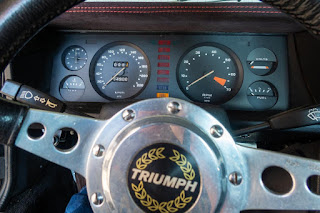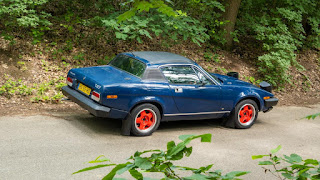The title above this post says it all! It really has been a long time since I took ‘t Kreng for a spin. But over the past week I have been able to spend some quality time on her, giving her a thorough check-over in preparation of hopefully more regular use and her valuation in two weeks’ time!
And during this check I only found a very tiny leak from the infamous connecting tube (UKC2538) between water pump cover and inlet manifold. But from past experience I know that it usually seals itself ones the engine is on temperature. So early this morning I topped up the header tank (only a cup of coolant needed to get it back to its correct level), and took her for a visit to a friend’s workshop. And despite the long hibernation the engine fired almost immediately. Needless to say I didn’t take the direct route, as it was again a revelation how good the old girl still performs!
Another reason why I took her, instead of the DHC, was because I wanted to check this cars cooling system’s temperatures on a summers day, with the engine fully warmed up and running. And the infrared thermometer I purchased for this task had been lying idle way too long! It was nice to see that there were no strange readings.




























